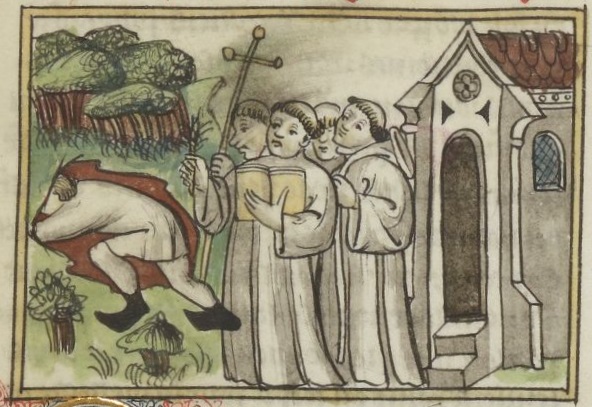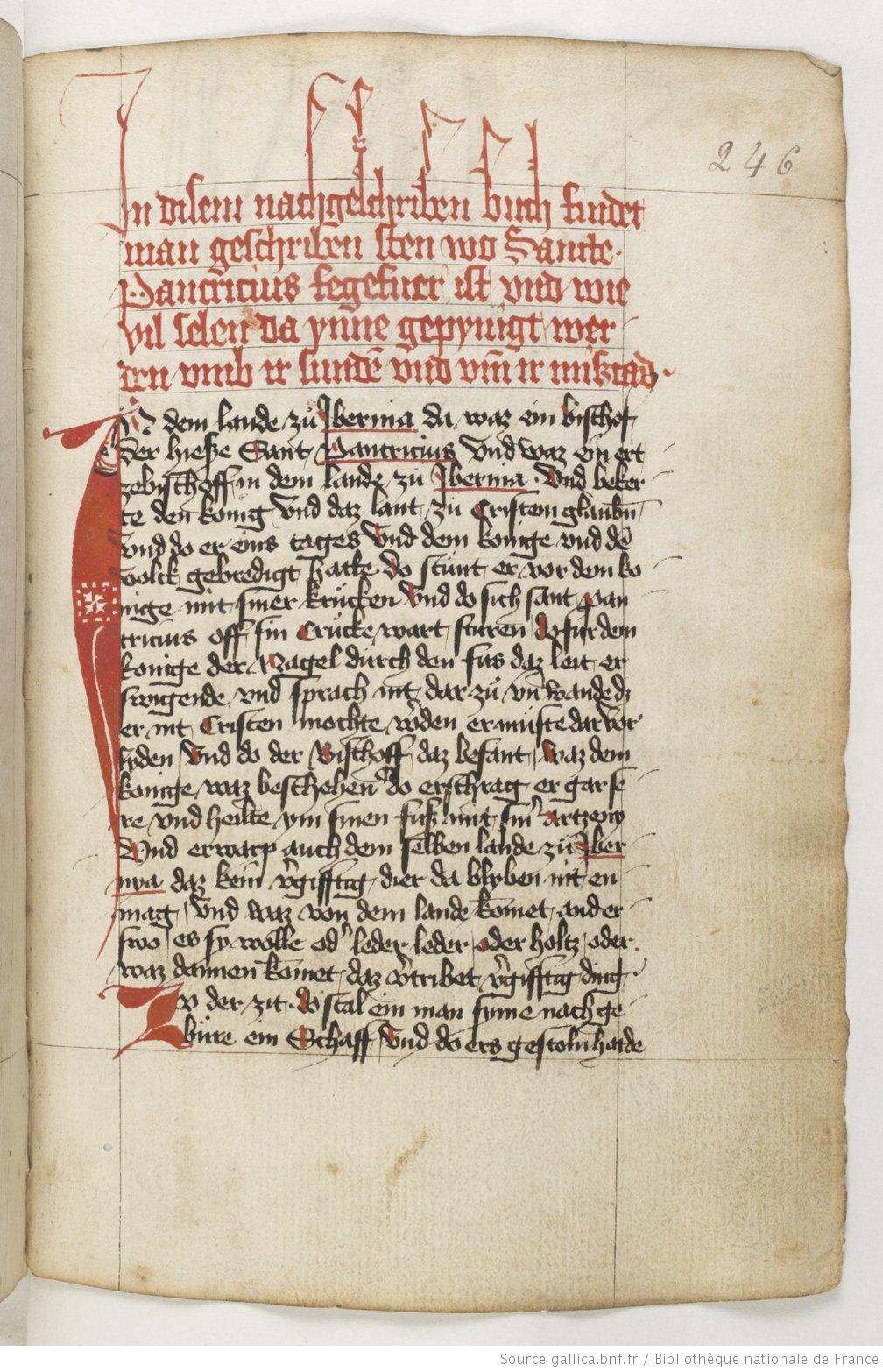
Last week we met St. Patrick, patron saint of Ireland and bane of snakes. This week, while we are still wearing of the green (if laundry day has not yet come and gone and refreshed our closet with other colors) we will explore some more of St. Patrick’s legend. It is less well known today, but one of the most widely read stories about St. Patrick in the medieval period was that of St. Patrick’s Purgatory. Descriptions of St. Patrick’s Purgatory were written by several different authors and translated into various languages across Europe, meaning that the site of the miracle became a popular pilgrimage destination. But what was it?
The earliest written account of St. Patrick’s Purgatory was written in the 12th century by one H. of Saltrey (he never spells out his full first name, although it is often assumed to have been Henry). According to this account, St. Patrick was supposedly led by God to a cave where, it was promised, those who engaged in fasting would be given a vision of, first, the torments inflicted on the wicked and, if they persevered in their faith, the joys of the blessed.
By the 12th century, this cave had apparently become a destination for pilgrims seeking to recreate Patrick’s spiritual journey. It was associated with the real location, a cave on an island in the middle of Lough Derg in County Donegal, Ireland. An Augustinian monastery on the nearby Saints’ Island cared for the site, and would ferry hopeful pilgrims across to the cave on Station Island to experience the rigorous miracle. Rigorous, because the pilgrimage was not without its dangers. In the story of a knight named Owein who successfully braved the feat, and whose story is a major part of H. of Saltrey’s account, the aspiring pilgrim is warned that many who went before had died in the attempt. It is not clear whether the danger resulted from the severe fasting that was the necessary preparation for the experience (which could stretch for as long as fifteen days!), or from the harrowing visionary journey itself. A trip to hell, after all, cannot be without its perils.

As in the Middle Ages, St. Patrick’s Purgatory continues even now to be an international pilgrimage destination, drawing people from around the world to fast and pray in the site believed to be the same as the medieval contact point with the three realms of purgatory, heaven, and hell. Unfortunately for modern visitors, however, they cannot now get exactly the same experience as medieval pilgrims, since the famous cave no longer exists. Its first appearance in the Irish historical record is in fact a report of its destruction, in the Annals of Ulster for 1497, when Pope Alexander VI ordered it to be “broken,” following an ill-fated visit by a monk who first antagonized the cave’s custodians by refusing to pay a requested fee to view the site, and then believed he had been cheated by them when he failed to experience any of the promised visions. The cave’s “breaking,” however, cannot have been absolute, since pilgrims were once again recorded as visiting the site as soon as 1512 — it is possible that the cave was rebuilt, that the destruction was never carried out, or that the authorities had been deceived by the destruction of a false cave. In any event, the cave was recorded as being closed again in 1632, only to be rebuilt and reopened, and then again demolished in 1780, this time as a safety hazard due instability caused by heavy pilgrim traffic. Even without the cave, however, the island itself continues to exert a powerful allure for those seeking a more direct contact with both Purgatory and the divine.
Nicole Eddy
Postdoctoral research associate
Medieval Insitute
University of Notre Dame
To read more about the history of St. Patrick’s Purgatory, see Theresa O’Byrne, “Dublin’s Hoccleve: James Yonge, Scribe, Author, and Bureaucrat, and the Literary World of Late Medieval Dublin,” PhD diss., University of Notre Dame, 2012, esp. ch. 2.
